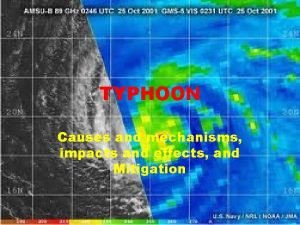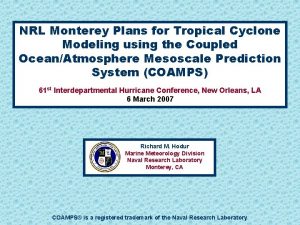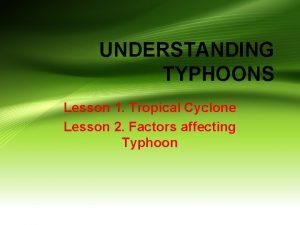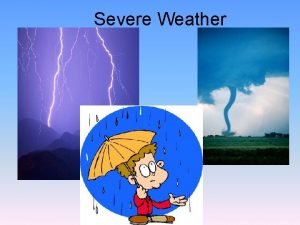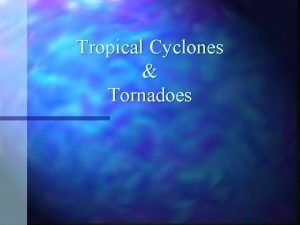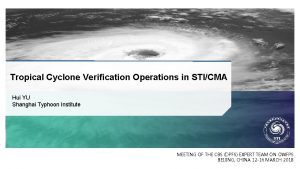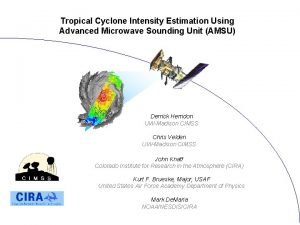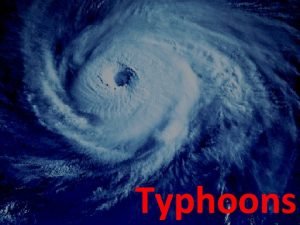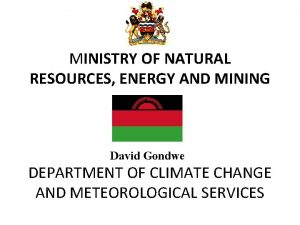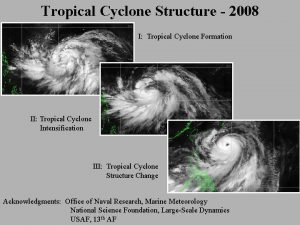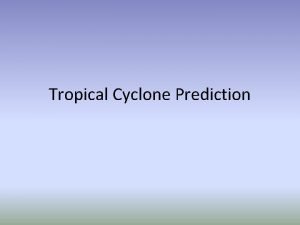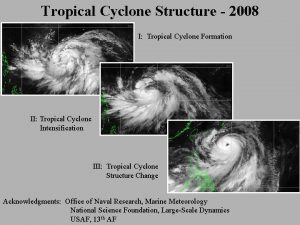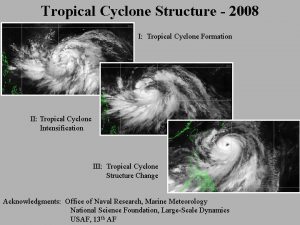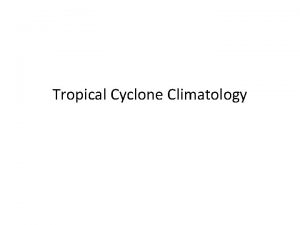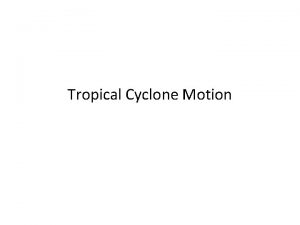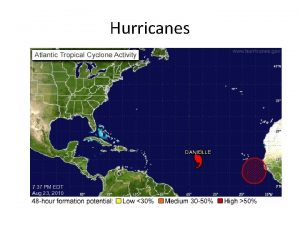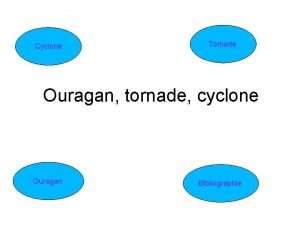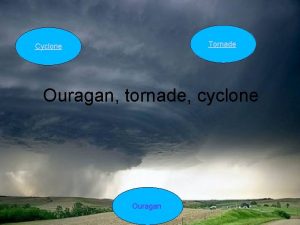PREDICTING AND COMMUNICATING TROPICAL CYCLONE EXPANSION EMILY PALTZ












- Slides: 12

PREDICTING AND COMMUNICATING TROPICAL CYCLONE EXPANSION EMILY PALTZ AUGUST 7, 2019

MOTIVATION

QUESTIONS What are the physical processes responsible for an increase in tropical cyclone size? Can we predict an increase in tropical cyclone size? How far in the future can we accurately forecast TC expansion? Are forecasters conveying information about TC size and change in size to emergency managers? If yes, do emergency managers understand the information and its implications? How can we improve this communication?

LITERATURE Shea Low-level r Mean Flow Vector 850 h. Pa mean flow Vertical Wind Shear Vector Difference between the 200 and 850 h. Pa mean flows Chen et al. 2018, 2019 suggest that the orientation of the low-level mean flow vector (LMF) relative the vertical wind shear vector (VWS) can tell us whether a storm is likely to intensify or expand.

LITERATURE Enhanced surface fluxes She ar Low-level Mean Flow = Intensification Chen et al. 2018,

MOTIVATION Shea r LITERATURE She ar Low-level Mean Flow Enhanced surface fluxes = Expansion Chen et al. 2018,

MOTIVATION LITERATURE She ar = Enhanced surface fluxes Intensification Nguyen et al.

FUTURE STEPS Use data from the Tropical Cyclone Dropsonde Research and Operations Product Suite (TC-DROPS) to study the relation between the vertical wind shear vector and the low-level mean flow vector using methods similar to that of Chen et al. 2018 Contact and converse with emergency managers about the information they receive and use to determine how to prepare their communities for the effects of tropical cyclones

MOTIVATION

QUESTIONS What are the physical processes responsible for an increase in tropical cyclone size? Can we predict an increase in tropical cyclone size? How far in the future can we accurately forecast TC expansion? Are forecasters conveying information about TC size and change in size to emergency managers? If yes, do emergency managers understand the information and its implications? How can we improve this communication?

FUTURE STEPS Use data from the Tropical Cyclone Dropsonde Research and Operations Product Suite (TC-DROPS) to study the relation between the vertical wind shear vector and the low-level mean flow vector using methodology similar to that of Chen et al. 2018 Contact and converse with emergency managers about the information they receive and use to determine how to prepare their communities for the effects of tropical cyclones


